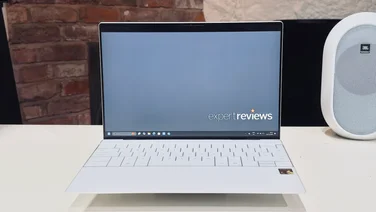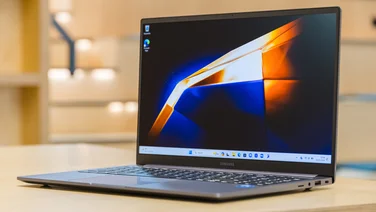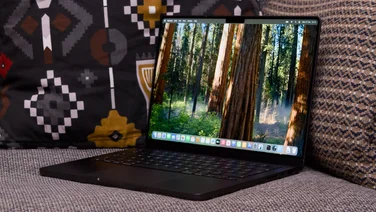To help us provide you with free impartial advice, we may earn a commission if you buy through links on our site. Learn more

Netbooks have long been a source of pain for consumers, looking extremely attractive on store shelves but ultimately leading to disappointment when poor build quality and lacklustre internal components rear their heads. The sub-£200 price point has remained almost exclusively the domain of Chromebooks in recent years but, as you’ll see from the Asus EeeBook X205TA, Windows machines are going through something of a resurgence thanks to Microsoft pushing manufacturers to create smaller, cheaper devices shipping with free Cloud services and storage.
Toshiba’s Satellite CL10-B costs a penny under £200 and comes with 100GB of Microsoft OneDrive storage for two years. This also gives you access to its Office Online service, which is a web-based version of Microsoft Office which we have found to be a more effective suite than Google’s own Docs and Sheets web apps. This would normally cost £1.99 a month, and after two years you will have to either pay or drop down to 15GB of free storage. This differs from the offering included with the Asus EeeBook X205TA, which comes with 1TB of OneDrive storage for one year and a year’s Office365 licence, which includes desktop software, too.
With just 32GB of eMMC storage on board, you’ll definitely need to make good use of that 100GB of cloud storage because after Windows 8.1 has been installed there’s just 12GB of free space left. You’ll have to adopt working in the cloud very quickly, storing your documents on OneDrive and choosing streaming services such as Spotify and Netflix for your music and movie needs instead of downloading them. If you have a large photo collection, you’ll need to store that externally, too. Working in the cloud isn’t a huge shift; it just requires a change in mindset. If you’re dead set on working on files locally, this won’t be the laptop for you. If you’re happy to head to the cloud or have previously owned a Chromebook, it’s worth considering.

However, for a machine so heavily weighted towards basic work and web browsing, you’d expect more from the keyboard. We were really disappointed with the harsh keys, which we found to have far too little travel meaning they bottomed out almost instantly, making typing for long periods a real chore. It also feels cramped because it doesn’t stretch the full width of the 11.6in chassis. Every centimetre counts when it comes to small keyboards, and Toshiba has not made the best use of the space available.The touchpad is reasonably responsive, although the physical buttons below the pad, again, have very little travel to them and aren’t particularly pleasant to use.
It’s a very light machine, at least, weighing just 1.1kg. It’s also just 2cm thick, making it small and light enough to keep in a bag without feeling weighed down. It’s not the prettiest of laptops, though, with off-brown colouring (Toshiba amusingly calls it Satin Gold) and shiny lid, and its certainly less attractive than Asus’ budget choice.
You get one USB3 port on the left-side of the laptop alongside a full-size HDMI port and an SD card reader. Also on the left is the power button, which is a slightly strange and awkward place to put it, especially because there’s plenty of room above the keyboard tray for it. On the right, meanwhile, is a second USB port, although this is only a slower USB2-specification connector. This sits alongside a combined 3.5mm headset jack. There’s no Ethernet port but you do get 802.11n Wi-Fi.
Processing performance comes from a dual-core 2.16GHz Intel Celeron N2840. It’s not hugely powerful but it’s perfectly good for basic word processing and web browsing tasks. It only has 2GB of RAM, so if you’re a heavy web browser you will have to temper your enthusiasm for opening lots of tabs at the same time. More complex tasks such as photo editing and gaming are well beyond the processor’s limits, but that’s to be expected from a sub-£200 laptop.
We were pleased with the Satellite CL10-B’s battery life: in our light usage test, which involves scrolling through web pages and playing video, it lasted just over seven hours, meaning if you’re careful you will probably manage to get a full day of work out of it on a single charge, although you may want to take the charger with you anyway just for extra peace of mind.
The screen is perfectly reasonable for such a cheap laptop, and while its 62.8 per cent sRGB colour gamut coverage results in fairly washed out colours, the critical angles which are so important on laptops are reasonably wide. It’s reasonably bright at 223cd/m2, although we doubt this, combined with the non-matt screen will be enough to overcome direct sunlight when working outside. It’s a 1,366×768 pixel panel, which is fine for single-window work but you’ll struggle to put two windows side-by-side when multitasking.
The Toshiba Satellite CL10-B is a decent attempt at a Chromebook-rivalling Windows laptop, with reasonable performance and acceptable build quality. The two years of 100GB OneDrive storage is a big bonus, but it’s not quite enough for Toshiba’s device to outscore the Asus EeeBook X205TA. Asus’ machine is better built, cheaper, lighter and has better battery life, which are all the hallmarks of a better laptop, and this is before you even consider the one year of 1TB cloud storage and personal Microsoft Office365 licence. You won’t be disappointed with the CL10-B, but we’d plump for the Asus every time.






